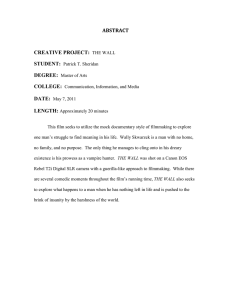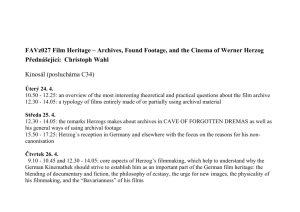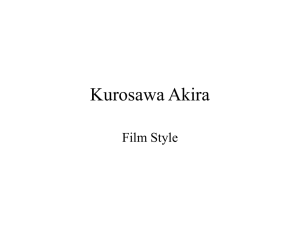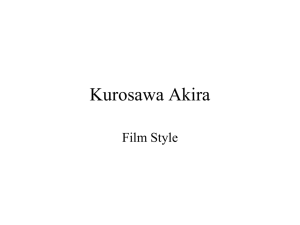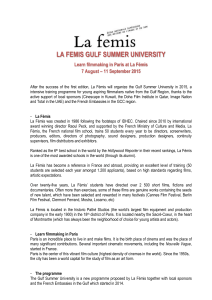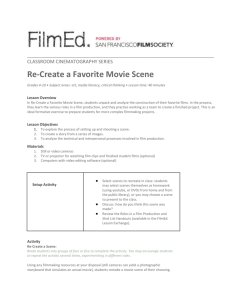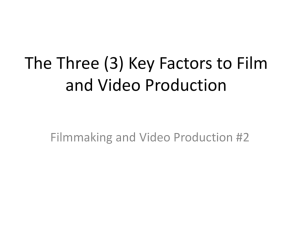Film Studies Midterm Exam Review Sheet
advertisement
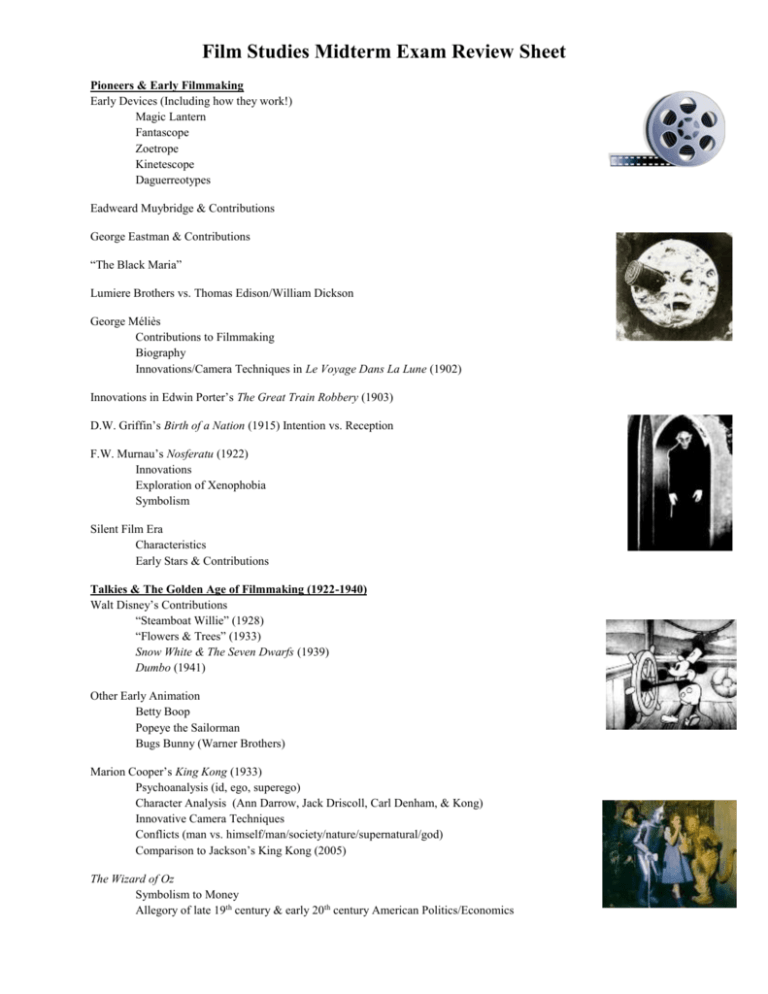
Film Studies Midterm Exam Review Sheet Pioneers & Early Filmmaking Early Devices (Including how they work!) Magic Lantern Fantascope Zoetrope Kinetescope Daguerreotypes Eadweard Muybridge & Contributions George Eastman & Contributions “The Black Maria” Lumiere Brothers vs. Thomas Edison/William Dickson George Méliès Contributions to Filmmaking Biography Innovations/Camera Techniques in Le Voyage Dans La Lune (1902) Innovations in Edwin Porter’s The Great Train Robbery (1903) D.W. Griffin’s Birth of a Nation (1915) Intention vs. Reception F.W. Murnau’s Nosferatu (1922) Innovations Exploration of Xenophobia Symbolism Silent Film Era Characteristics Early Stars & Contributions Talkies & The Golden Age of Filmmaking (1922-1940) Walt Disney’s Contributions “Steamboat Willie” (1928) “Flowers & Trees” (1933) Snow White & The Seven Dwarfs (1939) Dumbo (1941) Other Early Animation Betty Boop Popeye the Sailorman Bugs Bunny (Warner Brothers) Marion Cooper’s King Kong (1933) Psychoanalysis (id, ego, superego) Character Analysis (Ann Darrow, Jack Driscoll, Carl Denham, & Kong) Innovative Camera Techniques Conflicts (man vs. himself/man/society/nature/supernatural/god) Comparison to Jackson’s King Kong (2005) The Wizard of Oz Symbolism to Money Allegory of late 19th century & early 20th century American Politics/Economics “Who’s on First” Routine (Abbott & Constello, 1945) Marx Brothers & A Night at the Opera (1933) WWII Era Filmmaking & Postwar Era (1940s) Characteristics of Film Noire Orson Welles’ Citizen Kane (1941) Reception over the Years Character Development Kane’s Biography Narrative Structure Innovative Camera Techniques/Contributions Symbolism & Motifs Explanation about “Rosebud” The Story of G.I. Joe (Wellman, 1945) vs. Saving Private Ryan (Spielberg, 1998) Effect of WWII on Postwar Filmmaking Birth of Science Fiction: The Day the Earth Stood Still (Wise, 1951) Lure of the East: Seven Samurai (Kurosawa, 1954) Red Scare/Communism Obsession with War & Documentary Filmmaking Economic Hardship: It’s a Wonderful Life (Capra, 1946) Classical Period (1950s to early 1960s) Classic Western Filmmaking Characteristics “Cowboy Commandments” Magnificent Seven (Sturges, 1960) vs. Seven Samurai (Kurosawa, 1954) High Noon (Zinneman, 1952) Character Development Conflicts (man vs. man/woman,/society/himself) Real Time Filmmaking Plot Development Movie Renaissance Effect of Television on Film Industry Drive-in Movie Theaters Cinerama vs. Vista Vision Aromarama/Smell-o-Vision Broadway goes Hollywood Alfred Hitchcock’s Biography & Characteristics of his Films Rear Window (1953) Jeff’s Neighbors Jeff & Lisa’s Relationship Plot Development Camera Techniques Psycho (1960) Symbolism & Motifs Norman Bates Characterization Censorship/Sensitivity Issues Norman vs. Mother
